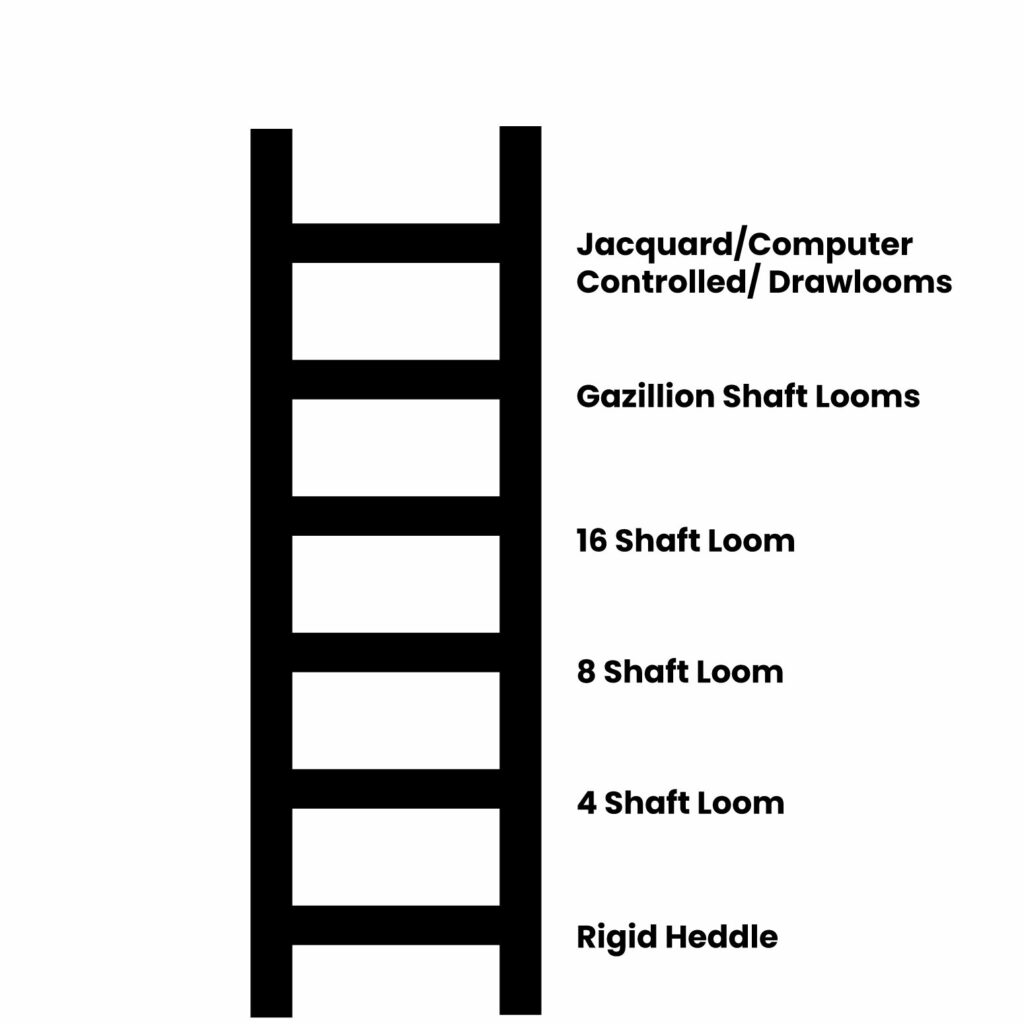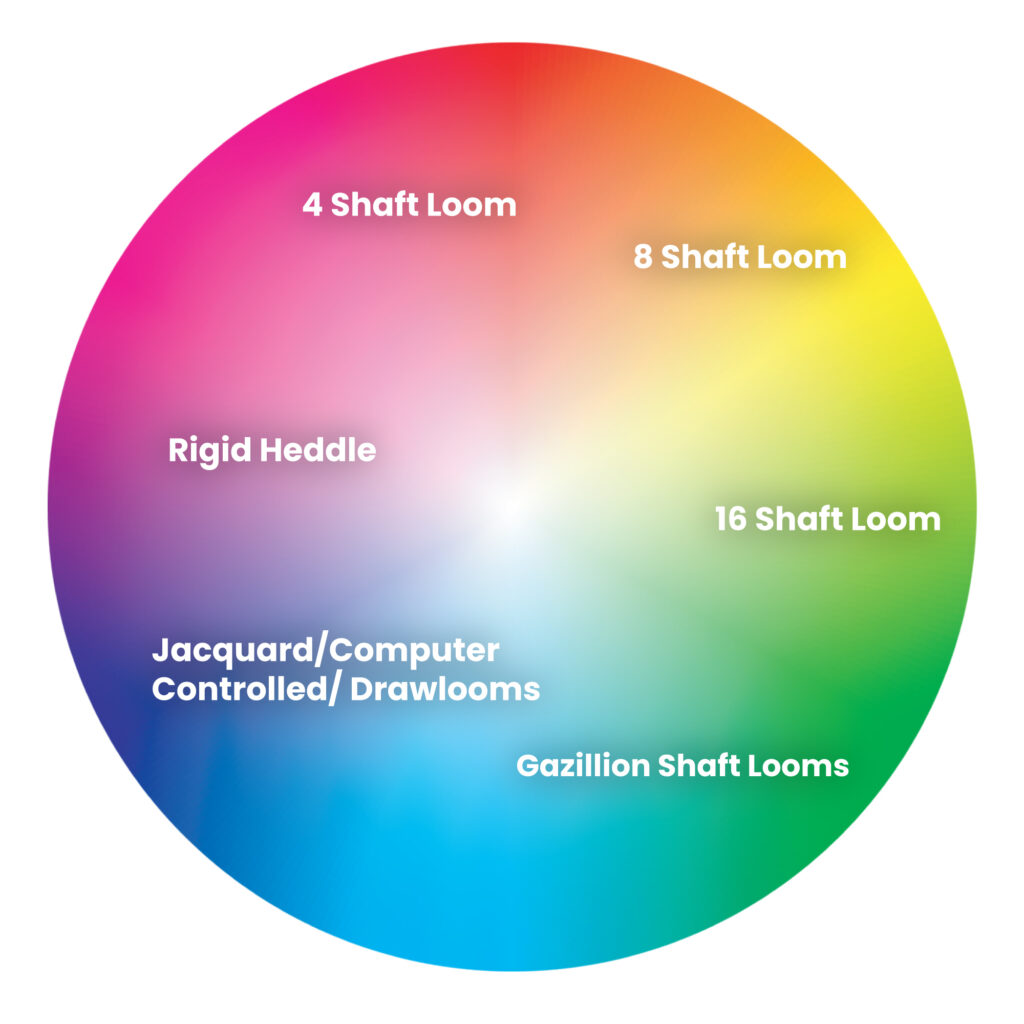Weaving was far from my first love. When I started weaving, I had already been involved in fiber arts for almost a lifetime, I started to stab cloth with needles and sewing thread at 6, I knitted and crocheted by 9 and when I was 10 I took my first sewing class. My life is a trail of unwashed roving, tangled yarns, dyed hands, and bins of unfinished sewing projects. Neither my small living spaces nor my relationships could allow for the space and expense of a bulky loom, so weaving sat off to the side as that one fiber thing I hadn’t really gotten into. When I learned I could weave without the need for a large floor loom on a modest rigid heddle, a whole new world opened up before my eyes and I was hooked.
What I didn’t realize was that weaving in America also has a bit of a culture where there are master weavers and all kinds of opinions about when weaver became one and that shaft envy was considered inevitable. I had never encountered that with any other fiber craft: you could knit garter stitch scarves and still be a knitter, you could crochet hats for 20 years or 4 months, and both crocheters found their common ground when passion met passion. When I met my first real-life weaver a bookstore and told them I had a rigid heddle loom she immediately went cold. A wall came up in our conversation and I realized that weaving had a different culture than the other fiber arts I had previously enjoyed. Even after years I wonder, am I yet a REAL weaver? And if not, what am I?
One thing I adore about the Handweaving Academy community is that it puts aside the concept of loom hierarchy. In my experience in other forums, magazines, and in advertising, it’s not uncommon to see loom types or the number of shafts you have presented as a ladder to climb.

The assumption seems to be that weavers should start with a “simple” loom and continue to trade up the ladder as you build skills.

This is how many weavers grow in their journey and there is absolutely nothing wrong with that at all if this happened to be your personal story. It is a logical transition in many crafts, as we gain more skills, we want more complex equipment. For example, you might start with a cheaper hobbyist camera before you invest in a professional full-frame camera if you practice photography. The issue with this in weaving is that if we accept this ladder as a general rule, it creates an embedded hierarchy based on weavers and their equipment: the more complicated the loom, the better the weaver, and the more complicated the interlacements, the more valued the cloth.
(Photo: Rebecca Robbins)
This assumption becomes especially problematic when we assess the value of woven items across different cultures and eras. It creates barriers by defining who is allowed to be a skilled weaver and what kinds of cloth have value in our modern weaving community. It creates an invisible barrier to many people who might not be able to or even desire to participate in climbing the invisible ladder of shafts and equipment.
Instead, maybe instead of the ladder, we can see the loom selection as a spectrum like this:

Instead of moving up, we are moving over. Instead of climbing, we are experiencing. If you love your 4-shaft loom, you don’t have to move over to the 8-shaft, you are a skilled weaver and your cloth is valuable. If you love your gazillion shaft loom and love what it makes, you have found the perfect tool for you. If you are a beginner, who is to say you must start with a rigid heddle or 4-shaft table loom? If you are drooling over 16-shaft twills and you have the money, why not start with a 16-shaft loom? We all have our particular weave style we are drawn to. Some of us are fine thread obsessed, others search for the perfect balanced linen plain weave with the color stripe just so. We need equipment that works with our individual goals.
All looms are good looms capable of making beautiful textiles in a weaver’s hands.
From the Course Catalog:

Learning Path One: Weaving with Muted and Neutral Colors – Perfect for all weavers, no matter what type of loom you use.

Rigid Heddle Looms from the Ground Up – This class breaks down the mechanics of how rigid heddle looms work. There’s more to them than meets the eye!

